Please, let me tell you of our marvelous adventure to the Copper Canyon in Mexico. It began in El Fuerte in the state of Sinaloa at Hotel Torres Del Fuerte and ended at Hotel Torres Del Fuerte. The hotel is a delightful restored hacienda that is artistically decorated and each room is, individually unique. We stayed two nights in the hotel in the beginning of the trip and two nights at the end of the trip. The owners, Jesus and his wife and their son, Francisco, enhanced our trip with their graciousness, friendliness, and personal attentiveness to the point that we felt that we were personal guests at the hacienda.
The Chepe train ride into the Barrancas del Cobre was a beautiful exposure into the vistas of canyons and mountain ranges, which gave us an appreciation of the wonder and majesty of the many canyons of the area known as Copper Canyon. This is a natural wonder of the world and the man-made wonder of bridges and tunnels carved out of the rock from the canyons is a spectacular engineering accomplishment.
Our first stop was in Cerocahui. We stayed at a ranchito that gave us the opportunity to hike and to ride horses into the rugged canyons. It was also our first opportunity to meet two Tarahumara children. After two nights in Cerocahui, we then traveled to Creel for two nights then back to Posada Barrancas to stay at the El Mirador Hotel.
Our time in the canyons was memorable, enjoyable, pleasurable, and interesting.
On our return to El Fuerte, upon exiting the train, our chauffeur, picked us up at the railroad station and we waved goodbye to the Chepe. During our transfer to Hotel Torres Del Fuerte, I realized that I had left my purse on the train! Of course, it contained everything of importance, money, camera, and passport!
In panic, I informed the chauffeur that I had left my purse on the train. He was shocked and thought for sure that I had misplaced it in my luggage. The driver pulled off to the side of the road and he and my husband searched the luggage in the back of the suburban. Of course it was not there! Francisco, from Hotel Torres Del Fuerte, had been to the train station to pick up someone from the train, too.
While we were searching the Suburban, Francisco stopped his car to inquire why we had stopped. My husband said that Francisco and the driver talked for a couple of moments and Francisco asked where we were sitting on the train. The chauffeur then motioned for my husband to return to the car. The chauffeur drove off without saying a word and went past the town of El Fuerte and into the countryside.
The night was very dark, there were few stars, and there was a gusty wind. Suddenly, after about 40 minutes, the driver pulled to the side of the road, stopped in the “middle of nowhere”, and then turned off his car lights and turned on his car flashers. He motioned for us to get out of the car. As we got out of the car, we noticed the train track crossing the road at what is known as Santa Maria crossing. Within thirty seconds, the train, which we had exited in El Fuerte station and was now on its way to Los Mochis, grew out of the night darkness, began to slow down and was beginning to cross the road; at the same time, the train engineer shouted out of his window for us to go to the last car on the train.
The last car was brightly lit and we could see that the porter was hanging out of the door with one hand fully extended from the handrail and the other arm fully extended toward the approaching chauffeur. In his hand he was holding my purse! He handed the purse to the running chauffeur without the train ever fully stopping. It was another engineering event, or rather a miracle!
We learned later that in the short conversation between the chauffeur and Francisco that they had devised the plan to retrieve the purse. Francisco made several calls to contact the train operated by the Mexican Federal Railroad and the chauffeur told Francisco at what crossing he would meet the train. After several calls, Francisco successfully contacted the train’s engineer. Francisco, the chauffeur, the train engineer, and the porter made it all happen!
This story is a tribute to the personal service which one experiences at Hotel Torres Del Fuerte. We are so pleased and thankful with all of the Mexican people that helped us as they exhibited such warmth, honor, chivalry, honesty, and generosity. We shall never forget our rescuers!
We wish to thank California Native for their specialized help and expertise in making the train and hotel reservations. They were attentive to details and gracious to work with.
Needless to say, we highly recommend staying at Hotel Torres Del Fuerte for its ambiance, its charm, its history, the delicious menu items, the wonderful and generous owners, and for their outstanding ability to turn a tragedy into a miracle.
The power of Mexico is, and always has been, its people, living together in a lovely land, influenced by culture, traditions, history, art.
Come and share this special part of Mexico!
Stephanie & John Hamann

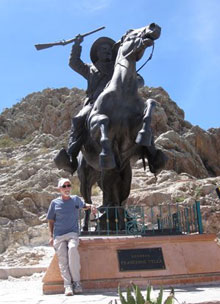 Pancho Villa, so the saying goes, was “hated by thousands and loved by millions.” He was a Robin Hood to many and a cruel, cold-blooded killer to others. But who was this colorful controversial hero of the Mexican Revolution and where did he come from?
Pancho Villa, so the saying goes, was “hated by thousands and loved by millions.” He was a Robin Hood to many and a cruel, cold-blooded killer to others. But who was this colorful controversial hero of the Mexican Revolution and where did he come from?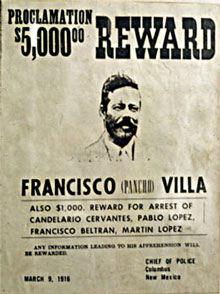 Pancho Villa was a natural leader and was very successful as a bandit, leading raids on towns, killing, and looting. He was also involved in more legitimate ventures, including being a contractor on the Copper Canyon railroad.
Pancho Villa was a natural leader and was very successful as a bandit, leading raids on towns, killing, and looting. He was also involved in more legitimate ventures, including being a contractor on the Copper Canyon railroad.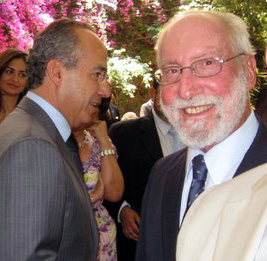 On May 21, 2010, California Native owners Lee and Ellen Klein were guests of Mexico’s President Felipe Calderón at a luncheon he held in Mexico City at Los Pinos, Mexico’s official presidential residence.
On May 21, 2010, California Native owners Lee and Ellen Klein were guests of Mexico’s President Felipe Calderón at a luncheon he held in Mexico City at Los Pinos, Mexico’s official presidential residence.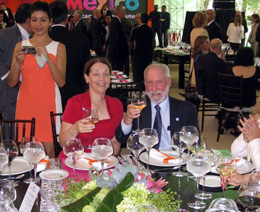
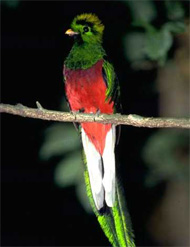 Let’s catch a quetzal—on camera that is. We can begin our hunt by hiking through the Monteverde cloud forest, on a California Native
Let’s catch a quetzal—on camera that is. We can begin our hunt by hiking through the Monteverde cloud forest, on a California Native 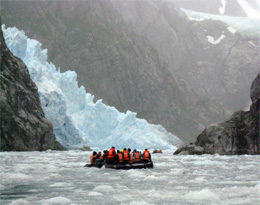 What is blue, white, frosty and cold? If you guessed a type of drink, try again! It is a glacier in Patagonia, and there are hundreds of them to see. The California Native scouting team was on our third trip to explore the area in March. This time we are developing a new itinerary for our adventures not only in Patagonia (Chile and Argentina) but also in other areas of the two countries.
What is blue, white, frosty and cold? If you guessed a type of drink, try again! It is a glacier in Patagonia, and there are hundreds of them to see. The California Native scouting team was on our third trip to explore the area in March. This time we are developing a new itinerary for our adventures not only in Patagonia (Chile and Argentina) but also in other areas of the two countries.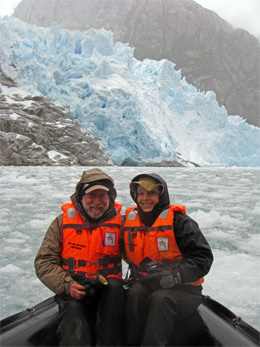 In the first of three weeks of travel in the region, we were able to set foot on Cape Horn (as far south as you can get without being in Antarctica), hiked an island in the Straits of Magellan, crunched our way up an ice field fjord in a zodiac, trekked in Torres del Paine National Park in the shadows of the snow-capped towers, visited the largest and the longest glaciers in Argentina, and even hiked up the glacier itself (crampons on!).
In the first of three weeks of travel in the region, we were able to set foot on Cape Horn (as far south as you can get without being in Antarctica), hiked an island in the Straits of Magellan, crunched our way up an ice field fjord in a zodiac, trekked in Torres del Paine National Park in the shadows of the snow-capped towers, visited the largest and the longest glaciers in Argentina, and even hiked up the glacier itself (crampons on!).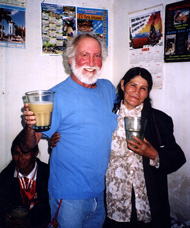 The strange-tasting drink, yellowish in color with a bubbly froth, is served warm for just a few coins, and is quite strong. It is not usually found in restaurants (a similar drink, chicha morada, made from blue corn, is sweet and sold everywhere like a soft-drink), but is sold by individuals, usually in the lower socioeconomic bracket, who have passed down the traditional recipes since pre-Inca times.
The strange-tasting drink, yellowish in color with a bubbly froth, is served warm for just a few coins, and is quite strong. It is not usually found in restaurants (a similar drink, chicha morada, made from blue corn, is sweet and sold everywhere like a soft-drink), but is sold by individuals, usually in the lower socioeconomic bracket, who have passed down the traditional recipes since pre-Inca times. We’ve spent an exciting day exploring the remote regions of
We’ve spent an exciting day exploring the remote regions of 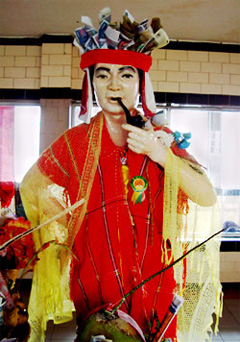 There they stand in a line, offerings of food and flowers covering their pedestals. These figures are called Nats, spirits of the wind, earth, rain and sky, and in
There they stand in a line, offerings of food and flowers covering their pedestals. These figures are called Nats, spirits of the wind, earth, rain and sky, and in 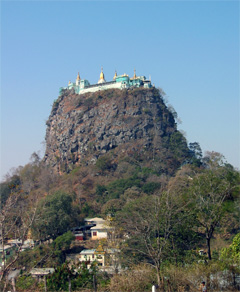 Mt. Popa rises straight up from the plain, with a staircase winding to the temple at the top. Along the way are colorful Nat shrines, and pilgrims come from all over the country to give their offerings and make peace with the flamboyantly dressed representations of the spirits. Alongside the stairways, shops sell all variety of exotic merchandise, including bear paws, while frolicking monkeys run up and down the stairs begging for handouts.
Mt. Popa rises straight up from the plain, with a staircase winding to the temple at the top. Along the way are colorful Nat shrines, and pilgrims come from all over the country to give their offerings and make peace with the flamboyantly dressed representations of the spirits. Alongside the stairways, shops sell all variety of exotic merchandise, including bear paws, while frolicking monkeys run up and down the stairs begging for handouts.